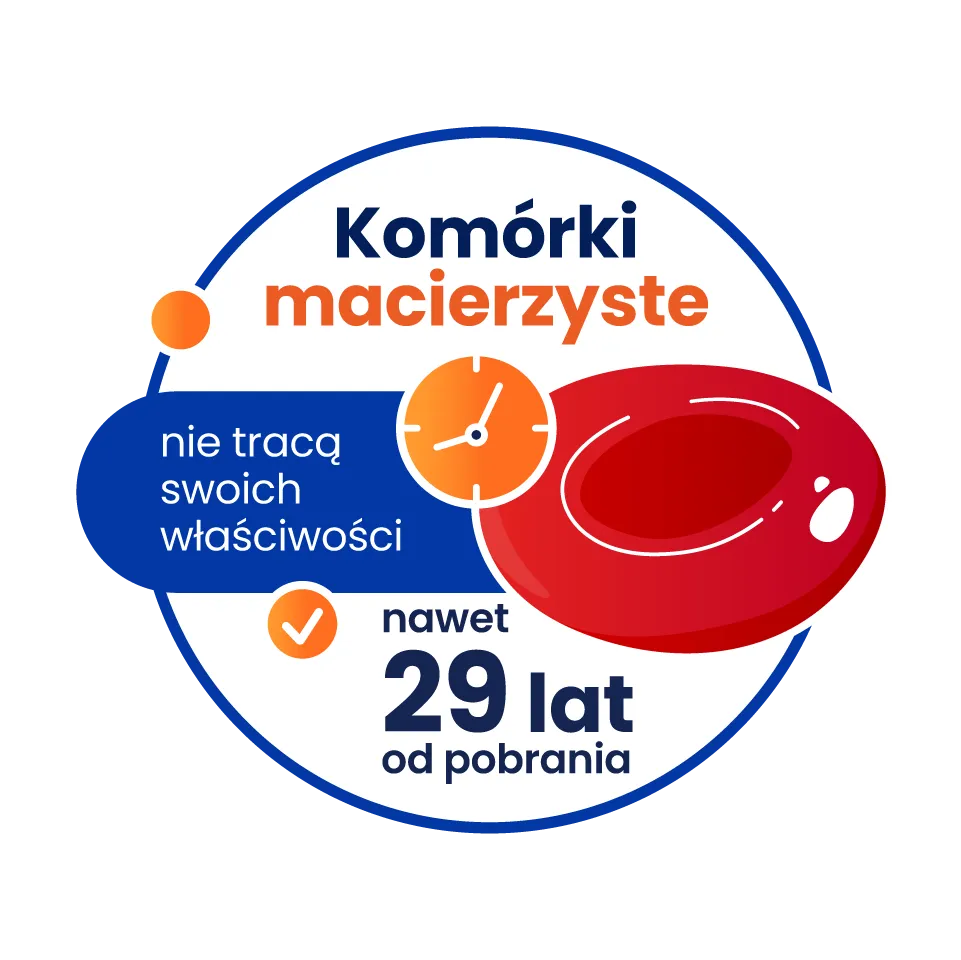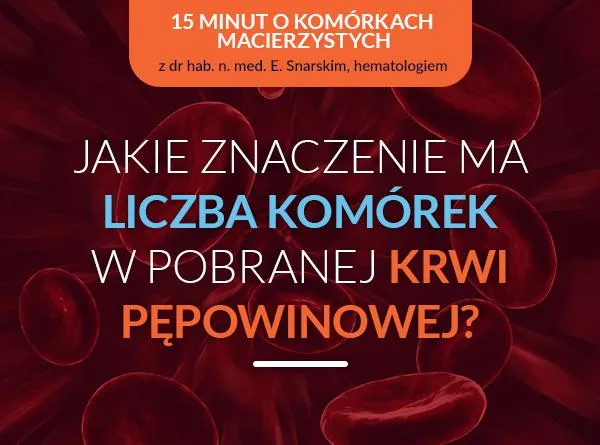We dispel doubts
about stem cells and cord blood
Stem cells
and cord blood – we dispel the myths
If you are interested in cord blood donation and stem cell banking, you may encounter a lot of false information.
In order to make an informed decision about cord blood donation, read some facts you should know:

Cord blood is an established treatment method
TRUE Stem cells from cord blood are used to treat 80 serious diseases.
In 2023, we celebrated the 35th anniversary of the first cord blood transplantation (08/10/1988).
Since then, more than 85,000 transplants have been performed worldwide.

Cord blood has greater regenerative capacity than marrow
TRUE Cells from cord blood have ten times greater regenerative capacity than bone marrow.
Moreover, they are characterized by lower immune maturity, so their transplantation causes fewer complications for the recipient (in the case of allogeneic transplantation, it’s a lower risk of graft rejection).

Obtaining cord blood does not affect the course of labor
TRUE The collection of cord blood occurs only after the baby is unbuttoned.
The decision at what point the umbilical cord should be cut is made by the midwife and doctor, taking into account current medical knowledge, information on the course of pregnancy and labor, the health of the mother and child, the mother’s preferences and the standards of the ward.

Cells do not lose their properties after freezing
TRUE Experiments conducted by American scientists have confirmed that stem cells have retained their unique abilities (to multiply and form colonies) after 24 years of storage in a deep-frozen state (temp. -196°C).
Theoretically, stem cells, together with a cryoprotectant preparation, can be stored under such conditions indefinitely without compromising the quality of the preparation.

Cord blood transplants are also performed in Poland
TRUE In Poland, stem cell therapies are gaining popularity.
Currently, stem cells from cord blood can already be transplanted in nine centers, while stem cells from the umbilical cord (used mainly in regenerative medicine) can be transplanted in thirteen.
Cells secured in the family bank enable rapid initiation of treatment (time reduced to as much as 2 months), as there is no need to search for a donor.







